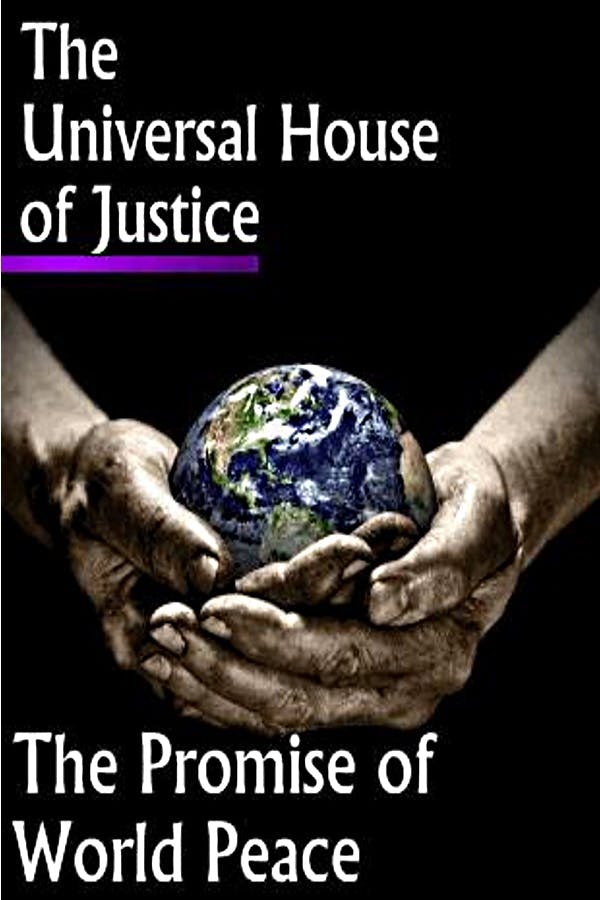In the intricate tapestry of human existence, where threads of diverse cultures, ideologies, and beliefs intertwine, the quest for peace emerges as a cardinal aspiration. The Bahá’í teachings, particularly as articulated in “The Promise of World Peace,” underscore a pivotal assertion: the role of religion in fostering global harmony cannot be overstated. This exploration will delve into the multifaceted relationship between religion and peace, illuminating how spiritual principles can serve as a catalyst for unity and cooperation among humanity.
At the outset, it is essential to acknowledge that religion, much like a compass, has historically guided civilizations through tumultuous periods. While often perceived as a source of division, religion possesses an inherent potential to unify. The Bahá’í perspective emphasizes that true religion is a manifestation of divine guidance, intended to promote love, compassion, and understanding among peoples. If we envisage religion as a garden—each faith representing a unique flower—then it becomes evident that the beauty of diversity, when cultivated with respect and reverence, can blossom into a shared vision of peace.
Bahá’í teachings advocate for a paradigm shift in the perception of religion. In this context, the notion of religion is not merely an assemblage of rituals or doctrines; rather, it is likened to a bridge connecting diverse communities. This metaphorical bridge facilitates not only the exchange of ideas but also fosters mutual respect among followers of disparate beliefs. Each faith tradition, with its unique narratives and ethical principles, can contribute to a collective understanding of peace, enriching the global dialogue.
Central to this discourse is the idea that religions are fundamentally aligned in their pursuit of virtue. The Bahá’í Writings elucidate that authentically interpreted, all religions converge on principles of justice, equity, and compassion. This realization posits that the varying paths to the Divine do not lead to conflict; instead, they converge towards the shared ultimate goal of fostering human dignity and unity. The teachings of the major world religions echo this sentiment, articulating a profound commitment to peace and the sanctity of life.
Historically, religious leaders and thinkers have often emerged as pivotal figures in peace movements. The teachings of these leaders carry the potential to galvanize communities toward action, transcending parochial loyalties and inviting collective responsibility. This phenomenon is notably highlighted in various epochs where faith-based initiatives have played a crucial role in mediating conflict or advocating for justice. Such examples reflect the palpable impact of spiritual guidance in navigating the complexities of human relations.
Moreover, the Bahá’í emphasis on the oneness of humanity amplifies the call for interfaith collaboration. Acknowledging that our destinies are intertwined fosters an environment wherein religious differences can be celebrated rather than vilified. This paradigm shift requires a concerted effort to engage in dialogue—an endeavor that transforms the act of listening into an instrument of peace. By genuinely attempting to understand divergent worldviews, adherents of various faiths can cultivate empathy, which serves as a cornerstone for resolving conflicts.
Expanding on these themes, the role of education becomes crucial in the pursuit of a peaceful society. The Bahá’í teachings advocate for universal education, not simply as a means of acquiring knowledge, but as a vehicle for moral and ethical development. Education empowers individuals to think critically and engage with diverse perspectives, thereby fostering an environment conducive to peaceful coexistence. By equipping future generations with the tools to analyze beliefs and practices through a lens of discernment and respect, society can cultivate a culture where peace is both a goal and a lived experience.
The metaphor of a mosaic appropriately encapsulates the essence of religious diversity. Each piece, unique in its color and shape, contributes to a larger, harmonious whole. Just as a mosaic artist meticulously selects each tile to create a cohesive work of art, so too must humanity acknowledge the richness that comes from differing beliefs. In the active pursuit of world peace, the contributions of all faith traditions should be recognized and integrated into the global narrative, creating a comprehensive and inclusive vision of harmony.
Furthermore, this transformative approach necessitates a critical examination of the practices that may inadvertently perpetuate division. It is paramount for religious institutions to reflect on their roles as agents of peace. This reflection involves a conscious effort to align actions with teachings; values of love, service, and kindness must be upheld in everyday interactions. When faith communities embrace their responsibility to be exemplars of peace, they reinforce the notion that religion can indeed be a powerful ally in the quest for global unity.
In conclusion, the promise of world peace as articulated in Bahá’í teachings offers a profound vision for a harmonious global society where religion is a unifying force rather than a source of division. Religion, viewed as a garden and a bridge, can help foster an enriching dialogue that emphasizes the shared values across faiths. Through education, empathy, and active collaboration among diverse communities, the path towards enduring peace becomes not only conceivable but achievable. In this intricate mosaic of humanity, a commitment to understanding, respect, and collaboration reveals the true potential of religion as an instrumental ally in the ongoing pursuit of peace.
